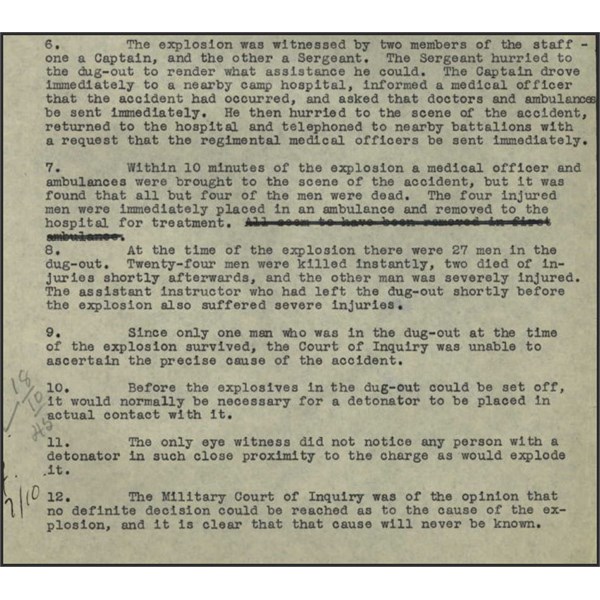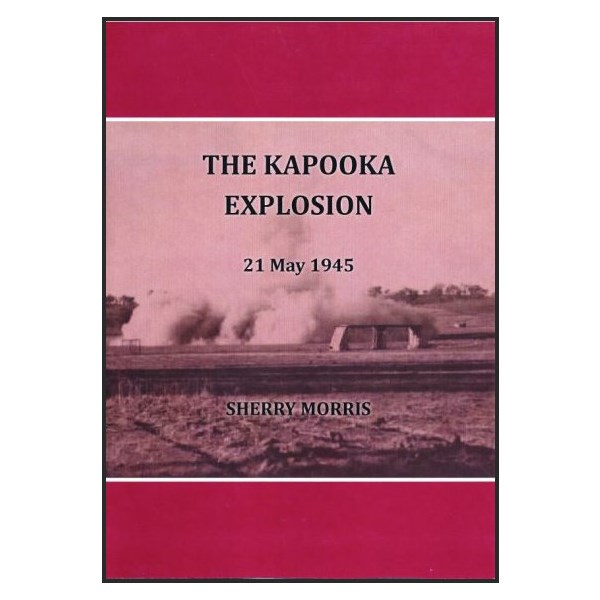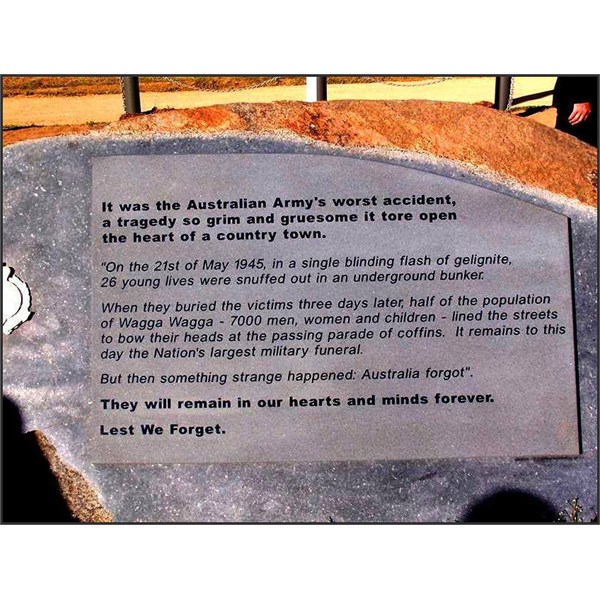On a crisp, clear May afternoon on May 21st 1945 Australia suffered its worst military training accident. An explosion at the Kapooka Army Base killed 26 men.
Trainee sappers (engineers) and Royal Australian Engineers Training Centre staff were conducting training in the preparation of hand charges when a massive explosion destroyed the dugout they were in, and killed 26 men.
One man survived - Sapper Allen Bartlett, who was profoundly deafened and badly injured after the force of the explosion imbedded him in the clay wall. One of the instructors killed was Sgt Herbert 'Jack' Pomeroy. It was his birthday.
One soldier, sergeant Tafe, saw smoke and
debris filling the air above the dugout and raced towards it.

A Dugout

Dugout After Explosion
"A grisly scene confronted him," Mitchelhill-Green says. "Checking the mass of bodies for signs of life, he found sapper Allan Bartlett in an upright position, imbedded into the southwestern wall by the force of the blast. Miraculously, Bartlett was alive. Two other soldiers in the dugout were also alive, but they died within hours from horrific wounds.
One rescuer observed seven intact bodies seated against the wall with their arms folded. "They looked like men of 80, their faces ash
grey," he said. The others were blown to bits. "Nineteen were identified by identity discs," says Rushbrook. "The remaining seven, being unrecognisable, were identified through personal possessions, including wedding rings, dental records and labelled clothing, including braces and civilian underwear. Pomeroy was identified by his engraved watch.

The Dugout where actual accident happened
Having survived the explosion, Bartlett was able to give evidence to the subsequent military inquiry from his hospital bed, He described how (another instructor) corporal Cousins was holding a handful of detonators with blue fuses attached before the blast but was right on the other side from where the explosives were," says Mitchelhill-Green. Bartlett said he had turned to "saysomething to my mate" and the next thing he recalled he was being "dragged out of the hole".
The army was stunned by the carnage and released a short statement that day saying 26 men had been killed in an explosion and promised an immediate inquiry.

Statement by the Minister for the Army 1 to 5

Statement by the Minister for the Army 6 to 12

Statement by the Minister for the Army 13 to 14
The funeral brought the town of Wagga Wagga to a standstill, with four semi trailers carrying the coffins of the soldiers through the town. About half the town's
population lined the street to watch this part of the funeral - Australia's largest military funeral
For many years this event has been considered a 'forgotten tragedy', but a new memorial near the site of the explosion ensures families, the military and members of the public can pass by and remember what happened on May 21st 1945.

Servicemen Killed Group A

Servicemen Killed Group B
Until recently the site was marked by an inconspicuous
plaque. The actual site of the
bunker now lies on private land just across from the new memorial, and a change in boundary fencing means the memorial site is open to the community - previously it had been within the lines of the Kapooka Military Area.
Each year the memory of these soldiers will be honoured with a special service at the memorial site at 2.30pm - the time of the explosion.The immediate aftermath was nothing short of horrific. Fellow engineers close to the accident faced unimaginable scenes as they scrambled their way in to help their mates. Medical personnel feverishly, and mostly in vain, worked to save the wounded.
"We will remember them always."
Please watch this video, it is 30 minutes but worth the time .
Latest Book from Sherry Morris – Now Available

The Kapooka Explosion by Sherry Morris
This was a timely release to coincide with the annual commemoration of this tragic event, which took the lives of twenty six men and which concluded with the largest funeral ever seen in Wagga Wagga.
This publication fulfils an important role in recording the details surrounding what still remains as Australia’s single largest military accident in terms of lives lost —

The Memorial

The Plaque
This is the first ever SHP that has put tears in my eyes during preparations.
LEST WE FORGET.
.